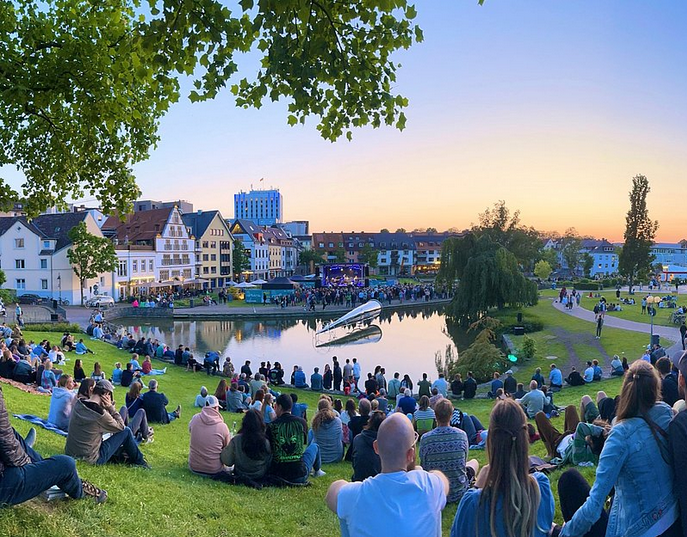An oak forest, a cultural quarter, an old industrial district, a cave, a prehistoric salt mine, a free speech space, a river... and several other sites from 15 European countries are competing for the European Heritage Label this year. The European Commission has just announced the 21 sites preselected for 2025.
A European panel of independent experts will evaluate the applications of the pre-selected sites and will select a maximum of one site per country. The European Commission will formally nominate the sites to receive the European Heritage Label in 2026.
European Heritage Sites are milestones in the creation of today's Europe. They celebrate and symbolise European ideals, values, history and integration. The EU awards this prestigious title to sites, monuments and places of outstanding cultural and historical importance. Since 2013, these sites have been carefully selected on the basis of their symbolic value, their role in European history and the educational activities they offer, with the aim of bringing the European Union and its citizens closer together.
The European Heritage Label differs from the UNESCO World Heritage List in that it focuses on the promotion of symbolic European values and the significant historical and cultural role of these sites, offering valuable educational experiences, especially for young people. Candidate sites must demonstrate their intrinsic European values and the role they have played in European culture, history or the development of the Union to be eligible for the label. Once awarded, the European Heritage Label is granted on a permanent basis, with the Member State responsible for regularly monitoring the site to ensure that it continues to meet the criteria.
The pre-selected European Heritage Sites for 2025 are the following:
Landeszeughaus, Styrian Armoury, Graz, Austria
The largest preserved historical armoury in the world is one of the most popular sights in Graz and is a reminder of a conflict-ridden chapter in Styrian history. The provincial arsenal was built during a turbulent period: from the 15th to the 18th century, Styria had to fend off several raids by the Ottoman Empire and Hungarian rebels. The arsenal, built between 1642 and 1644, served as an "equipment center" for simple foot and cavalry soldiers for around 100 years. Today it is both a monument and a museum: around 32,000 pieces of war equipment are on display in the Styrian Armoury.
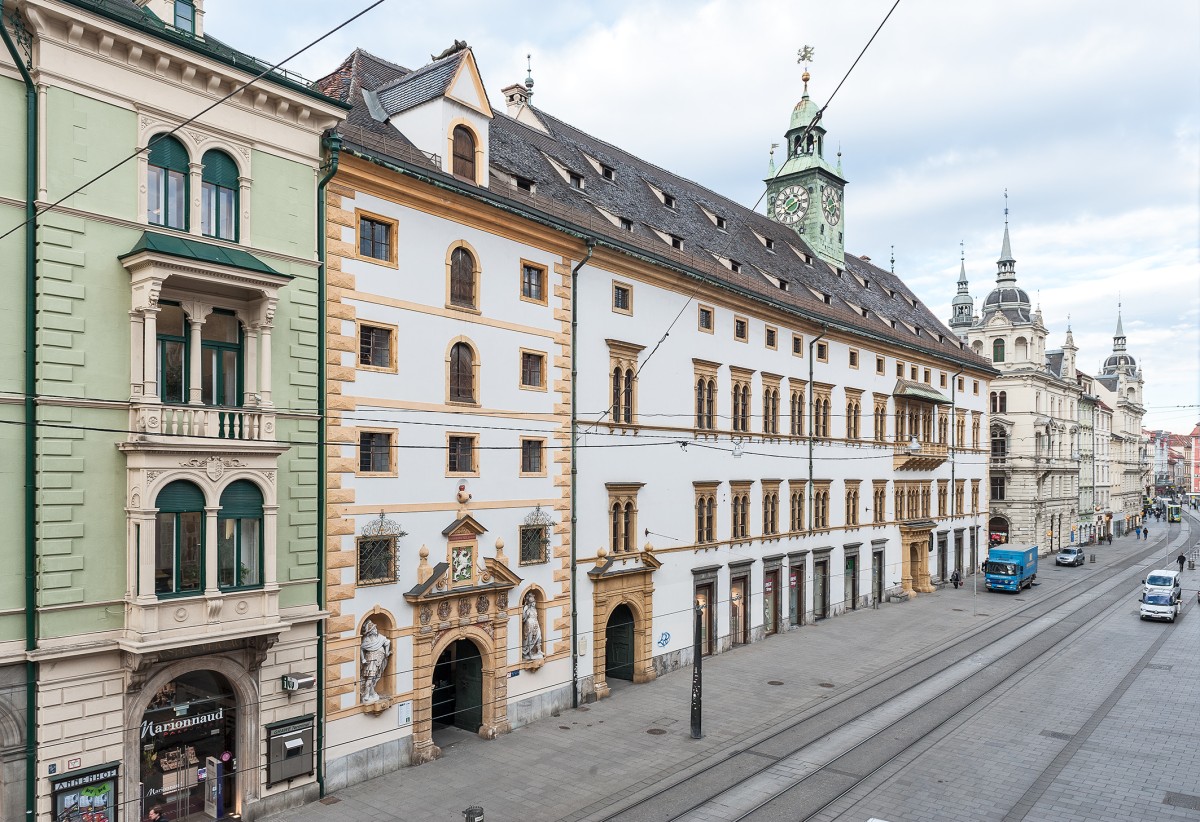
Scladina Cave, Andenne, Belgium
The Scladina cave is one of Belgium’s major prehistoric sites. It is the largest Belgian prehistoric excavation site still in progress and open to the public. It is the only permanent excavation site for ancient prehistory in Belgium that is open to the public. On site, in the heart of the cave, visitors can discover the many facets of field archaeology. The scientific interest in the site is essentially archaeological, paleontological and anthropological. Scientific excavation began with the discovery of artefacts fashioned by Neanderthals (Middle Paleolithic).
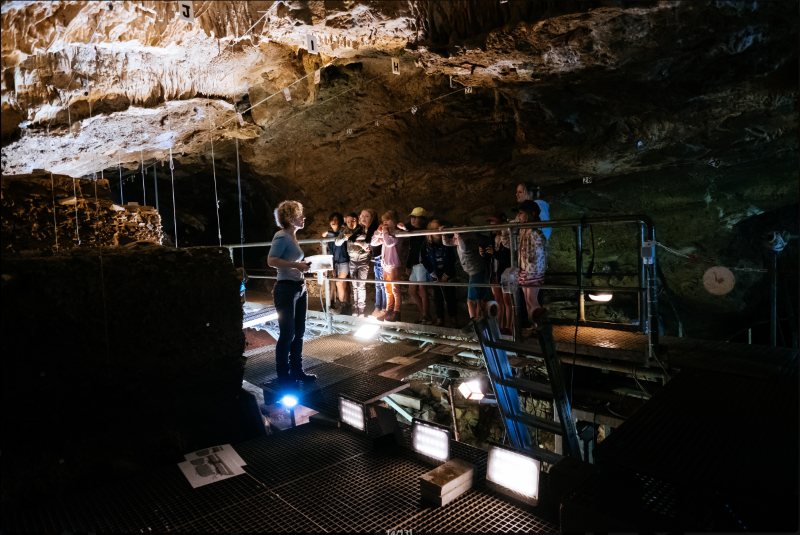
Domain and Royal Museum of Mariemont, Belgium
The Domain and Royal Museum of Mariemont is an important European “lieu de mémoire” boasting a rich history which dates back to the mid-16th century. Located about 50km south of Brussels, this beautiful 45-hectare domain is both a green oasis and a space for world cultures near the urban centres of Wallonia, the French speaking southern region of Belgium. However, close to one third of the domain around the ruins of its historical origins has been cordoned off because of safety concerns. Classified as an exceptional heritage site of Wallonia in 2003, Mariemont has two levels of heritage importance: the domain itself, related to the major events, cultural trends and personalities of European history of the last 500 years; and the museum collections of world heritage artefacts, initiated by a visionary philanthropist connected to the European industrial revolution. The site began as a hunting estate established in 1546 for the sister of Emperor Charles V, Mary of Hungary (hence its name), and served during almost 250 years as the country residence for the successive governors of the Habsburg Netherlands, including the Archdukes Albert and Isabella.
Prehistoric salt mining and urban centre Provadia-Solnitsa, Bulgaria
The prehistoric complex Provadia-Solnitsata is located near the modern city of Provadia. It represents the remains of the oldest salt production center in Europe (5600 - 4350 BC), which became the first prehistoric urban center on our continent (4700 - 4350 BC). It consists of: 1. Neolithic-Chalcolithic production complex, 2. Non-fortified and then fortified with stone walls, Chalcolithic settlement (citadel) and a Thracian tomb above it, 3. Late Chalcolithic ritual field (pit sanctuary) 4. Late Chalcolithic necropolis, 5. Middle Chalcolithic necropolis. The site covers an area of about 300 acres. The emergence and development of the complex are directly related to its location on top of the largest and in fact the only deposit of rock salt in the Eastern Balkans- the so-called Mirov salt field.
Free Speech Space, Czech Republic
Post Bellum is an organisation that tell stories, document, educate It is part of an international network of partner organizations that share the same values and goals. The international Memory of Nations collection is one of the most extensive open databases of eyewitness testimonies and contains hundreds of recordings of foreign eyewitnesses alongside thousands of Czech testimonies translated into English.
City-People-River, The Pader for Europe, Pader, Germany
The Pader gushes forth with around 200 springs in the Paderborn urban area. Some of them are large karst springs. Together they pour 3,000 to 9,000 litres of water per second, making it the strongest inner-city spring area in Germany. The history of the Pader is a reflection of social processes and symbolises the development of European river landscapes. Today's urban river landscape of the Pader is the result of human intervention in nature and symbolises the overcoming of tensions in the cultural space. Driven by technical progress and growth, the demands on the urban river changed.
Ninth Fort Museum, Kaunas, Lithuania
The Ninth Fortress is part of the Kaunas Fortress, built at the end of the 19th century. During the Soviet occupation, the fortress was used as a prison and a stopover for prisoners being transferred to labour camps. After the occupation of Lithuania by Nazi Germany, the fortress was used as a place of execution.
Cultural Centre la Nau, Valencia, Spain
The historic building, of Cultural Centre la Nau was declared Asset of Cultural interest in 1981. It is the oldest and most emblematic facility of the Universitat de València. It was the head office of the university since its foundation in the 15th century to the first half of the 20th century. The building was an example of Valencian neoclassical architecture, particularly the façade and cloister. The current architectural design of the building is the result of continuous refurbishments that have been adapting the building to different functions and necessities throughout 5 centuries, since Pere Compte’s original design to the last refurbishment (1999 and 2012) that updated the facilities to transform the building into an essential cultural centre in Valencia.
Monastery of Santa Maria la Real, Aguilar de Campoo, Spain
The monastery of Santa María la Real is an old abbey of the Premonstratensian order located in the town of Aguilar de Campoo, province of Palencia, community of Castilla y León, Spain. Monument built between the 12th and 13th centuries in a style of transition from Romanesque to Gothic with elements of Cistercian art. According to the legendary story, lacking any historical basis, this cenobitic house was founded by Opila, abbot of the Monastery of San Miguel de Tablada on the banks of the Ebro, sometime in the early ninth century.
Industrial Heritage of Varkaus, Varkaus, Finland
Old Varkaus is one of the core areas of the city's history, and the industrial history dating back to the beginning of the 19th century is still strongly felt in the streets, buildings, factories and parks. Old Varkaus is a small and compact area where you can meet many things within a kilometer radius, because industry, culture, nature and the old and the new live side by side in a close interaction. Varkaus - and Old Varkaus at its heart - is a realized utopia, because when planning the industrial community, it also meant building the future market town and city at the same time. Industrial development measures laid the foundation for growth in the early 20th century. The development of the factories into a comprehensive wood processing plant started the big construction years at the beginning of the 20th century, and the area was practically still a blank piece of paper, although of course some of the iron works that was in the area had been saved from the 19th century.
Rachi of Troyes European Remembrance, Troyes, France
Rachi was born in Troyes, in Champagne, in 1040, where he spent his early years. At the age of 18, he left to study in the great intellectual centres of Judaism in the Rhineland (Germany), first in Mainz and then in Worms. On his return to Troyes, he founded his own school, which welcomed pupils from all over Europe and took precedence over the Rhineland schools. Rachi was considered to be the sage of his generation. He died in Troyes in 1105.
Places Of Peace
Alcáçovas (Portugal), Altrandstädt (Germany), Bucharest (Romania), Edirne (Turkey), Evoramonte (Portugal), Kaynardzha (Bulgaria), Khotyn (Ukraine), Trenčin (Slovakia), Vasvár (Hungary), Wermsdorf, (Germany), Zadar (Croatia)
ENPP is a European network of places where peace treaties or capitulations were signed, represented by its public and private institutions. These places are aware of the historical often tragical events and commemorate them. With the mandate of a past of wars the members of ENPP work together to build a culture of peace and to promote those places based on its common historical and Intangible Heritage.
Baroque Town-Fortresses, Osijek (Croatia), Alba Iulia (Romania), Timisoara (Romania)
Historical-Town Planning Ensemble Tvrda (Fort) in Osijek: The area round the confluence of the Drava and the Danube abounds in major natural resources. It is also an intersection of major transport routes and a key strategic point. This is the reason why it has always been an interesting site for settlement and why everybody sought control over it. The right bank of the Drava, some twenty kilometres from its confluence with the Danube, was of particular importance because of the easy crossing at that point. The communication route ran from the pre-Alpine region along the right bank of the Drava and the Danube towards southeastern Europe, with a branching to central Europe at the same point. Therefore, not surprisingly settlements were established in the area already in prehistoric times. With minor interruptions, their continuity has been sustained to the present day.
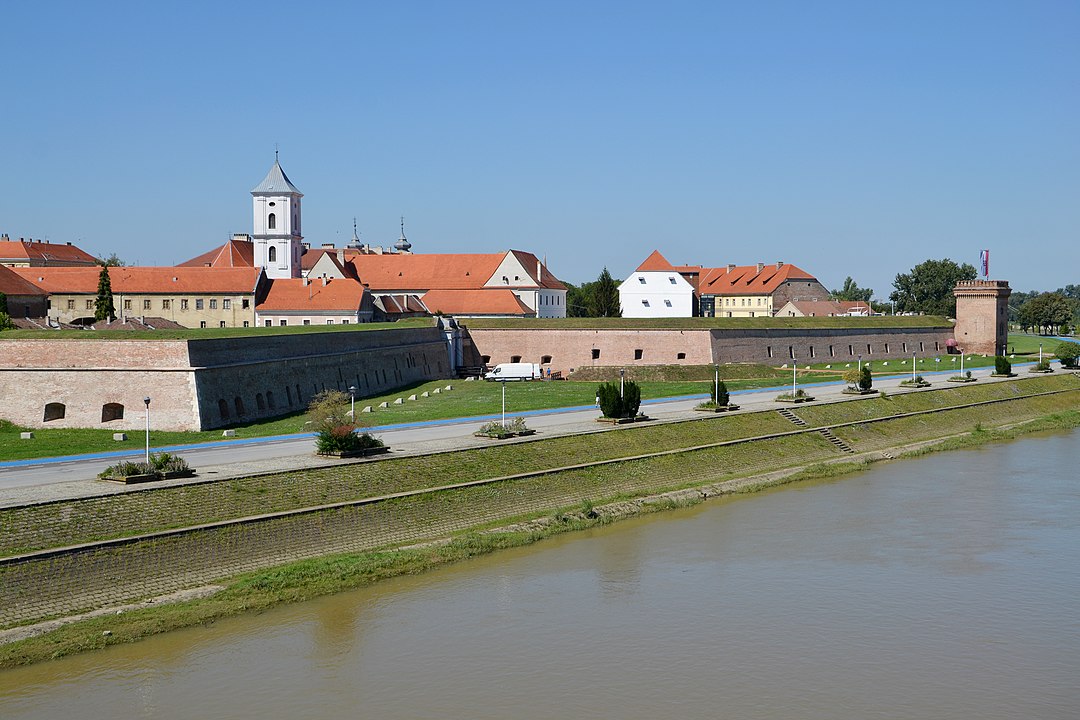
Saint George Church of Ják, Ják, Hungary
The abbey and church of Ják is devoted to Saint George, and was founded around 1220, by Márton Nagy Jáki (Comes Marthinus Magnus), a Hungarian nobleman. The Iconic basilica is monumental, has three naves, and has semi-circular apses. It is known today as the church of Ják, and is one of the earliest and symbolic still standing Romanesque churches in Hungary.
Zsolnay Cultural Quarter, Pécs, Hungary
The city of Pécs lies between the South Transdanubian region of rolling hills and lush forests of Hungary. Of the city`s countless attractions, Zsolnay Cultural Quarter, declared to be a Hungaricum (a unique Hungarian product or attraction) in 2014. Pécs is the hometown of the Zsolnay family, who founded the manufactory in 1853. Today, the Zsolnay heritage lives on, thanks to the restored 5-hectare area of land that surrounds the manufactory. A total of 15 protected historic buildings and 88 public Zsolnay statues feature the scenic parks and promenades. The Zsolnay Cultural Quarter includes unique exhibitions that display the history of the manufactory.
Oak Forest National Regional Park, Seveso, Italy
Located to the north of Milan, is the Castaneturn area which is densely populated and is the site of numerour companies, industrial plants, farms and forests. In 1976 a toxic cloud of dioxin (TCDD) seriously contaminated the area and after 5 years an international commission decided to decontaminate it, by removing about 40 cm of the top layer of the contaminated soil and placing it in two special dumps. In 1984 the decontamination process was was concluded, a project for the park was created and a private contracting firm begun construction. After a series of technical and functional problems that were resolved through the intense, concerted efforts of technicians. various government organizations and universities, the park was completed in 1986.
Teatro Olimpico Vicenza, Vicenza, Italy
The Teatro Olimpico is the first indoor theatre in masonry in the world, with interiors made of wood, stucco and plaster.It was constructed by architect Andrea Palladio, between 1580 and 1585, when it was inaugurated.It is included in the UNESCO World Heritage List.
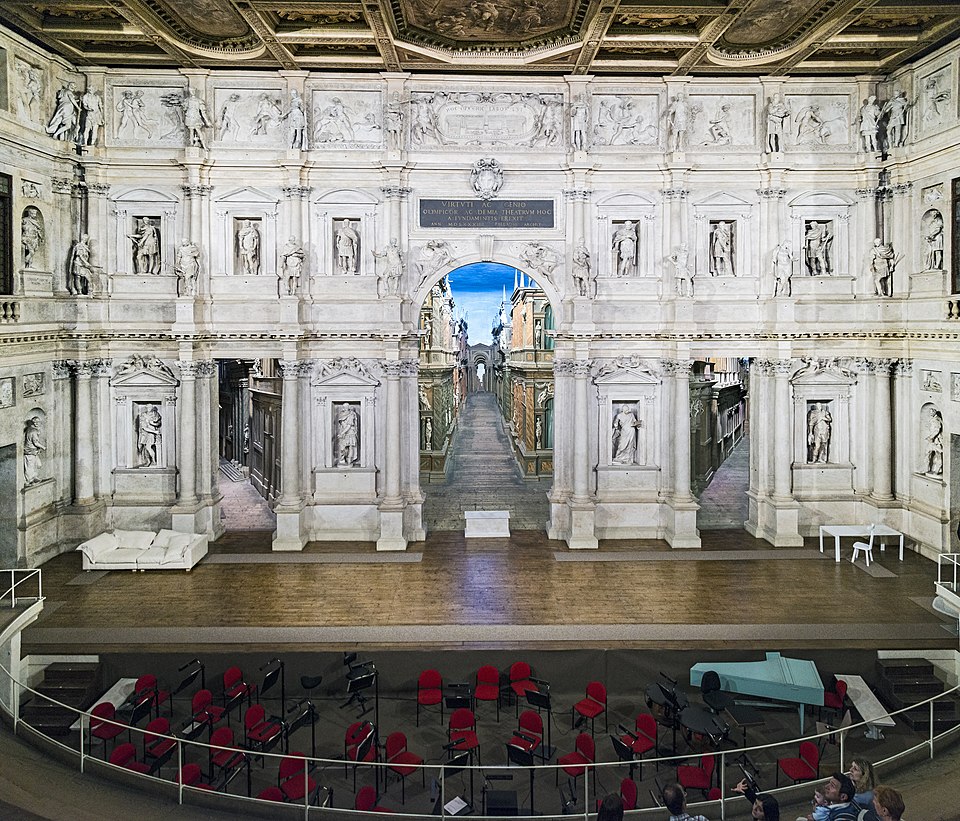
Saint Paul's Catacombs, Rabat, Malta
Serving as a burial ground from Punic, Roman and Byzantine times the St Paul’s Catacombs represent the earliest and largest archaeological evidence of Christianity in Malta. It’s association to the saint derives from the myth that this cluster of catacombs was once connected with St Paul’s Grotto. Although this remains a myth, recent research shows that the two, originally formed part of a considerably large cemetery just outside of the ancient city of Melite. Indeed, it is now known that the hypogea were located in a cemetery with a very long history of use starting in, at least, the 3rd or 4th c. BC.
A draft “Constitution for Europe” by Wojciech Bogumił, Central Archives of Historical Records, Warsaw, Poland
Wojciech Bogumił Jastrzębowski (1799 – 1882) was the author of the Project for the European Constitution written in 1831, which formed part of the Treaty of Eternal Covenant among Civilized Nations. The manuscript is located in the Central Archives of Historical Records in Warsaw. Wojciech Bogumił postulated the creation of an alliance between nations that would ensure eternal peace in Europe and be based on fair legal norms (contained in the Project for European Constitution).
The manor and park complex at the Krzysztof Penderecki - European Centre for Music, Luslawice, Poland
In the 1970s, Krzysztof Penderecki was looking for a place to harbour him and his creative pursuits. The composer considered abandoned palaces and ruined castles that the communism-ravaged country abounded with. Eventually, he chose the Lusławice Manor House: a true home, moreover, one of exceptional significance for culture and history. A manor house is open, without the gimmicks and glitz, and moats and bastions. Inviting and hospitable. An emanation of bygone Polishness, the country manor style evokes an aura of unpretentious freedom.
The Lapedo Child remains, Lagar Velho rock shelter, Lagar Velho, Portugal
The nearly complete skeleton of the ‘Lapedo child' was discovered 27 years ago in a rock shelter called Lagar Velho in central Portugal. It was stained red, and scientists think it may have been wrapped in a painted animal skin before burial. Scientists have dated the skeleton that carries features from both humans and Neanderthals, to between 27.700 and 28.600 years ago.
--
Photo credits:
- Styrian Armoury museum / Universalmuseum Joanneum / N. Lackner
- Cave Scladina / Grottes de france / Sophie Bernard
- The Pader / City-People-River
- Teatro Olimpico / Didier Descouens
- Historical-Town Planning Ensemble Tvrda (Fort) in Osijek / Pudelek








